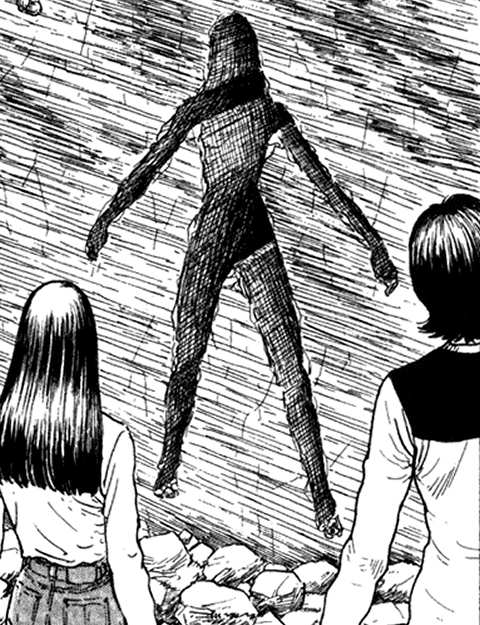


It’s very short.The fault line is revealed to have an untold myriad of holes that are human-shaped. Through metaphor, they are reminders of the fragility of our lives, and the arbitrary, overwhelming ways they might be interrupted.įans of cosmic dread, go read Amigara Fault. Or a fault in the rock.Īnd then you notice Ito’s sense of humour.īoth stories are terrifying, but not because anything particularly ‘scary’ happens.

It is arbitrary, therefore it has no solution. Some molecule, somewhere off in the cosmos, has shifted an inch, and suddenly your world isn’t your world anymore. The threat is neutral but overwhelming: the horror, and its cause, are Cosmic. There is no escape because there is no rhyme or reason you could ever hope to understand. More often that not, the lives of his everyday heroes are disrupted imperceptibly in the background, often before the story begins, and they’re left to pick up the mess. That domestic connection ratchets up the discomfort of the horror when it does arrive. All of Ito’s best stories are like this because they don’t rely on an outside force: everything is exactly as it was in his characters’ lives, until the moment it isn’t. Amigara Fault is about a literal fault in the earth and the psychic infection in spreads through its uncanny resemblance to the human form. Uzumaki‘s English title is ‘The Curse of the Spiral’: it’s about the haunting of a small town by the concept of a spiral, the shape itself, and how it warps the lives of everyday folk. To get into details at all would ruin the fun, but the reason I’ve picked both Uzumaki and Amigara Fault is because at their center they’re the same story: they are tales of obsession and compulsion that defy the natural order. I’ve never seen anything like it: The Enigma of Amigara Fault is considered Ito’s finest hour for a reason. If you’ve never read it maybe leave off here and do so. It’s viral within the horror community, so I’ve included a link to read it in full. I’ve included Uzumaki because it’s a masterpiece, but today’s real pick is the infamous and impeccable Enigma of Amigara Fault, originally published in the back of Ito’s fishy body-horror GYO. He externalizes the threat, every single time. Though both write Cosmic Horror, Lovecraft’s threats came from the outsider – the foreigner and, more often than not, the traveller (cosmic or otherwise). Meanwhile, Ito is alive right now, and living in Japan with his wife and their demonic cats. There are no wayward professors or Egyptian tomb-raiders with Ito – a hundred years ago Lovecraft was a contemporary of Poe, and it shows. His characters are the working class, salarymen, students and children. A Junji Ito story is characterized by its intense attention to domestic detail, though rarely its length: his settings are apartment buildings, traditional Japanese homes, offices and hospitals. Japan’s most celebrated horror artist writes Cosmic Horror too, but his tools are sharper and more precise. The fear of the unknown is, too often, simply the fear of the Other. Give him another read if you aren’t with me yet: I love Lovecraft, but there’s a reason a lot of his villains look like me. More or less all of his ‘weird fiction’ boils down to outsiders invading in some form or another, and disrupting the natural (White) order. But since Lovecraft subsisted entirely on a diet of candy, racism and superstition, most his stories function as metaphors for his intense xenophobia. Now, Lovecraft invented Cosmic Horror because he was brilliant. It’s the logical conclusion of the fear of the dark. That’s what makes it so scary: it’s the suggestion that we are truly alone, our reality is a sham, and that we are utterly, cosmically, helpless. Anything at all can happen, literally, and neither God nor the universe itself will intervene to help. Bored, inter-dimensional beings might invade earth for reasons we cannot ever understand and corrupt humanity overnight (but more on Hellraiser later). In a Cosmic Horror gravity might invert at random one day, or a long-dead God might wake up at the bottom of the sea and afflict all human-kind with madness. It’s called ‘Cosmic Horror’ because of the scale of the threat: it’s the universe itself betraying you, the unseen, neutral hand of forces beyond your understanding or comprehension crashing reality in upon itself. Lovecraft – preys on the most elemental and raw fear of all: the fear of the unknown. But first, a word on Cosmic Horror.Ĭosmic Horror – the style of horror pioneered by profound racist H.P.


 0 kommentar(er)
0 kommentar(er)
